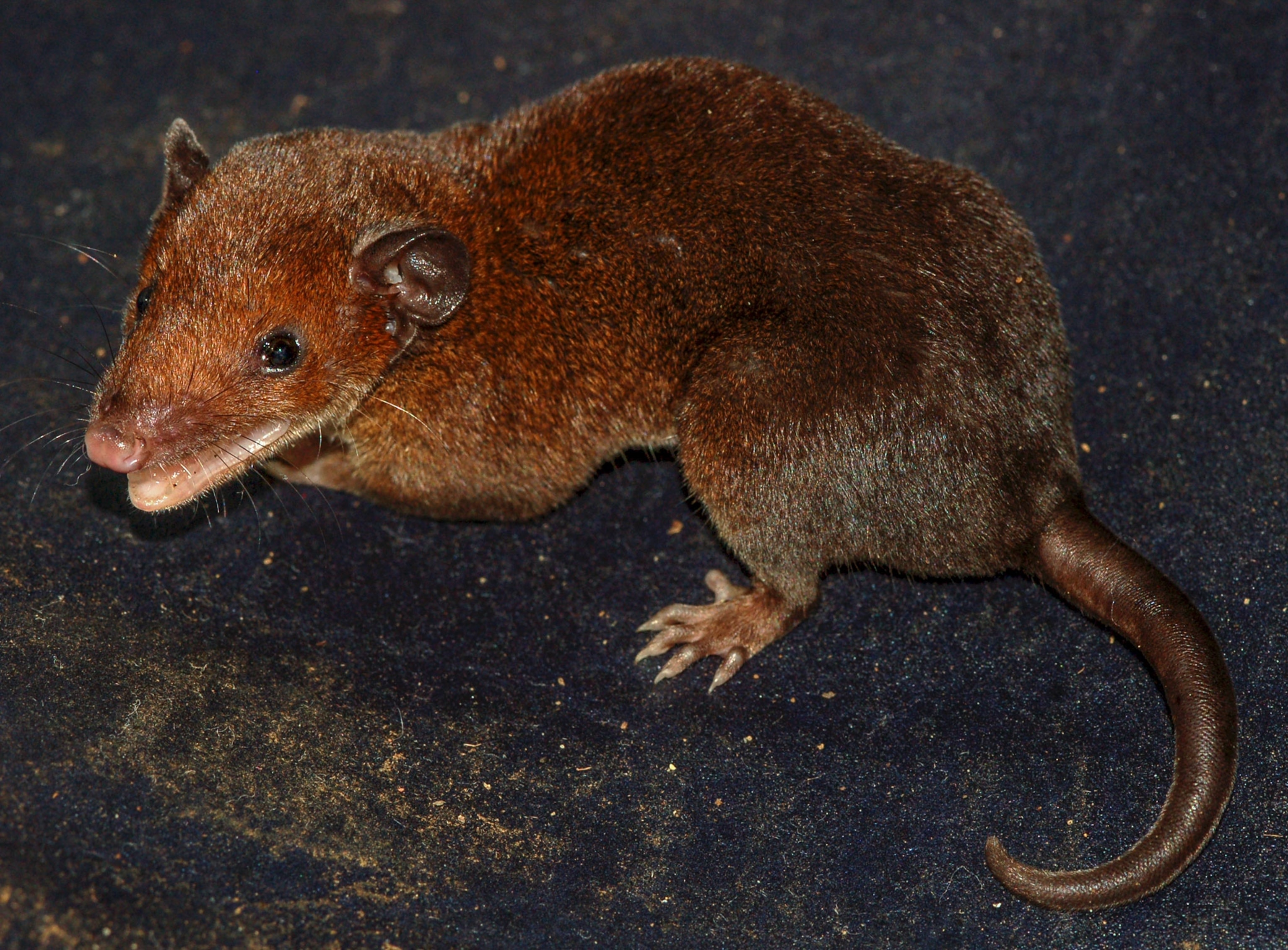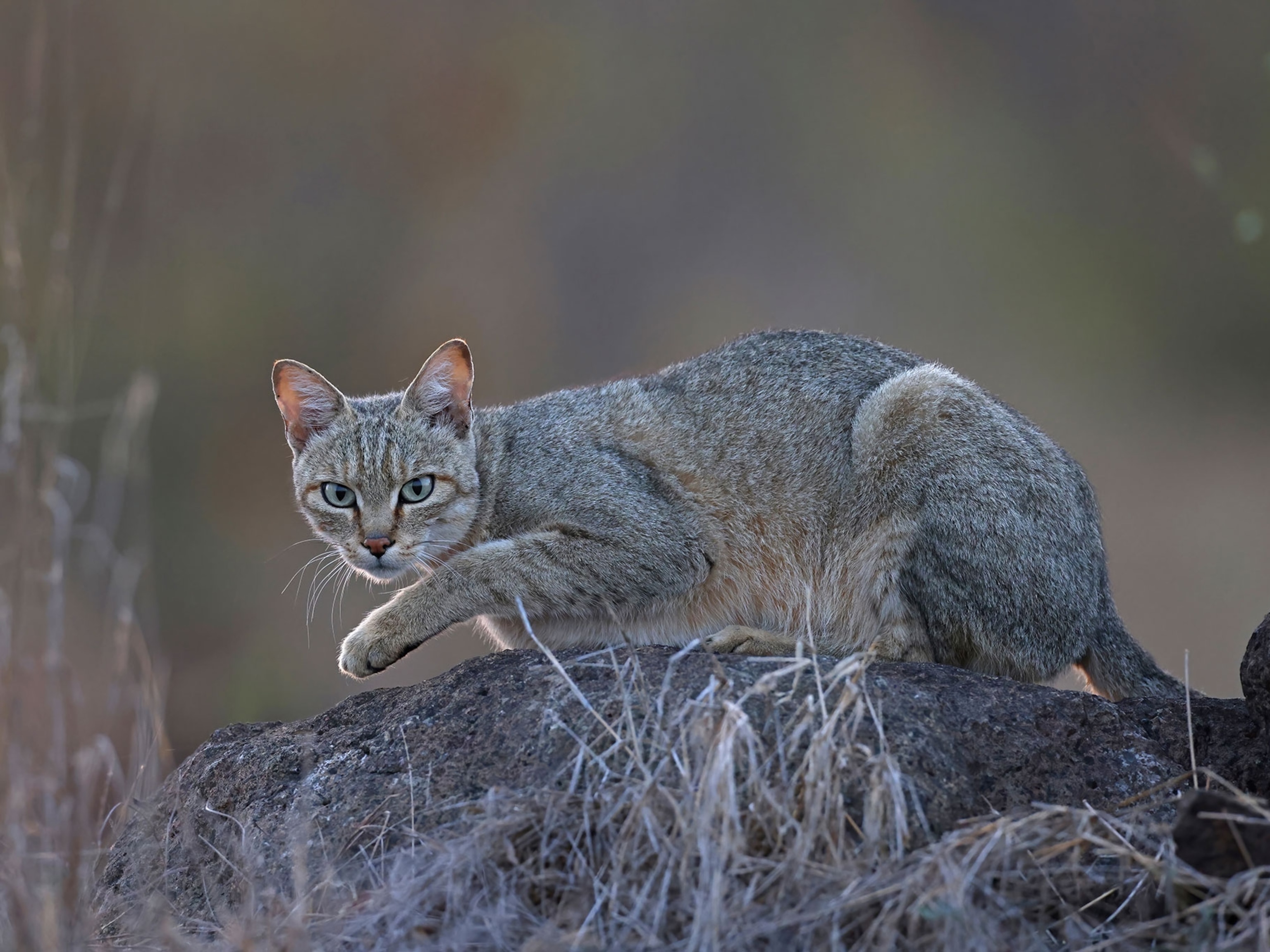
New Redheaded Opossum Named After Magical Gnome
The rat-size marsupial prowls the tropical rain forests of northern Brazil at night.
A chance finding at a Brazilian museum has revealed a brand-new species of opossum.
Biologist Silvia Pavan first discovered an unnamed mammal specimen with rich mahogany fur in 2008 at the Museu Paraense Emílio Goeldi in Belém.
The rat-size marsupial's reddish head inspired its name: Monodelphis saci.
Brazilian folklore features a gnome called the saci (pronounced sah-SEE), who wears a magical red cap that lets him disappear and reappear at will. (See "Unbelievably Cute Mammal With Teddy Bear Face Rediscovered.")
Just like the saci, the new species of opossum has a red cap—and had been hiding in plain sight.
“I analyzed the specimen right away when it was brought to the museum, and I noticed it didn’t have a name,” says Pavan, lead author of the new study in the journal American Museum Novitates.
After that, she was able to find other specimens representing the same unnamed species in Brazilian collections.
Playing Possum
Opossums evolved in the South American tropics; several dozen species live in the Americas, but only the Virginia opossum made it as far north as the United States.
All opossum species are nocturnal omnivores, eating a range of fruit, insects, and small mammals—a flexibility that has allowed them to spread far and wide. (Read how opossum blood may help snakebite victims.)
As part of her Ph.D. work at the American Museum of Natural History, Pavan wanted to piece together the opossum family tree. But with so many species sprinkled across so many habitats, Pavan went to museums to supplement her search for opossums in the wild.
After she came across the gnome opossum, her colleagues traveled to the source—Itaituba I National Forest in Pará, Brazil—to see if they could find live animals.
Mysterious Marsupials
Pavan’s colleagues set up a series of humane pitfall traps—basically small buckets that capture opossums as they prowl the tropical rain forest at night.
To her surprise, Pavan discovered several more gnome opossums in her buckets. (Also see "Newly Discovered Carnivore Looks Like Teddy Bear.")
“They’re not really that rare, but they only appeared in scientific collections relatively recently when people started using the pitfall traps,” she says.
The species doesn’t appear to be threatened with extinction, though more people have been collecting the animal in the wild in the weeks since her discovery was announced, she says.
Guillermo D’Elia, a biologist at the Austral University of Chile in Valdivia, says there are likely more marsupials to be identified.
“I am pretty sure there are several new species of opossum to come in the future," D'Elia says, "now that researchers are collecting in new areas, rechecking museum specimens, and using DNA."
Follow Carrie Arnold on Twitter.





